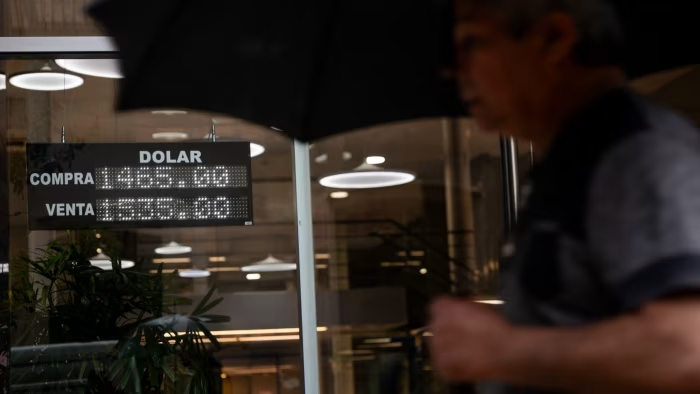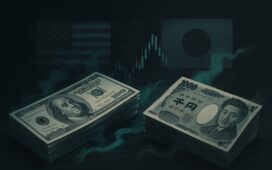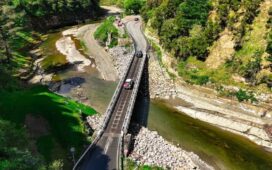Trump administration officials are discussing ways to encourage other countries to adopt the dollar as their primary currency to counter a China-led charge to erode the greenback’s global dominance.
Staff from government departments — including the Treasury and the White House — met Steve Hanke, a professor at Johns Hopkins University and a leading expert on dollarisation, over the summer to discuss how the administration could promote the policy.
“This is a policy they are taking very seriously, but it is in progress. No final decisions have been made yet,” Hanke told the Financial Times.
Talk about dollarisation comes amid US involvement to try to calm a market crisis in Argentina. Some policymakers and economists view the Latin American economy as a prime candidate for dollarisation due to frequent losses of confidence in the peso — even though both the US and Argentina say it is not actively under consideration.
Administration officials have, however, become concerned by a push led by Beijing for emerging markets to use the dollar less in cross-border transactions.
Hanke said a figure he described as a “political personality” with links to the White House outlined those concerns at a meeting in late August.
“[The political personality] made clear what was already clear to me: there was a group high up within the administration that was interested in bolstering the international role of the dollar,” Hanke said, adding that the interest in dollarisation was “in the same space” as the administration’s push for broader use of dollar-backed stablecoins.
“The high and mighty had requested that all related issues be thoroughly examined, and that’s where yours truly comes in.”
A White House spokesperson confirmed officials had met Hanke, but emphasised the administration was yet to reach any official decision on whether to encourage dollarisation.
“President Trump has repeatedly affirmed his commitment to maintaining the strength and power of the dollar. As it does on many other issues of national importance, the administration regularly seeks out insights from outside experts on this presidential priority,” said spokesperson Kush Desai. “These discussions and listening sessions, however, should not be seen as reflective of official policy positions or the administration’s policymaking.”
While the discussions began in August and predate the US Treasury’s extension of a $20bn financial lifeline to Argentina, Hanke told officials he believed the Latin American country would be one of the obvious candidates for the policy, along with Lebanon, Pakistan, Ghana, Turkey, Egypt, Venezuela and Zimbabwe.
Argentina maintained a “currency board” peg to the dollar from 1991 to 2002 but it collapsed after the country’s catastrophic 2001 default.
Hanke’s two in-person meetings took place in mid and late August. Senior officials from the US President’s Council of Economic Advisers and National Economic Council, and the National Security Council attended both meetings.
The second also involved an official from the US Treasury and the White House political personality.
Hanke, who has spent much of career advising on dollarisation, remains in regular contact with administration officials. But he says that the recent Argentine crisis has not sparked an intensification of discussions.
Dollarisation has often been touted as a fix to Argentina’s repeated currency crises and was a core campaign pledge for libertarian Javier Milei before 2023’s presidential election. Argentina’s economy minister Luis Caputo earlier this month ruled out dollarisation as a short-term option, saying the country did not have the dollar reserves to make it work, but did not reject the idea outright.
Others also tout dollarisation as a potential solution for Argentina. “That’s what has to happen if you want to break the cycle,” said Jay Newman, a key figure in hedge fund Elliott Management’s long battle with Argentina for a payout on its defaulted debt. “Otherwise every time you put dollars into the economy they get sucked out by the oligarchy and everybody who has an offshore bank account.”
Other smaller Latin American economies, such as Ecuador and El Salvador, already use the dollar. However, the IMF believes dollarisation would condemn Argentina to low growth, by forcing it to adopt the US Federal Reserve’s monetary policies.
Argentina fell into its latest crisis last month, when a shock defeat for President Milei’s party in regional elections triggered a run on the peso that threatened the country’s fragile macroeconomic stability. But the turmoil has largely subsided after a landslide win for the government at national legislative elections last month.
Many holders of Argentina’s US dollar bonds believe that official dollarisation is a distant prospect, not least because it would need to be backed by a huge increase in depleted dollar reserves.
With markets now stabilised after Milei’s victory, investors instead expect that his government will eventually shift the peso from an official exchange rate ‘band’ against the dollar towards greater flexibility — with US and IMF backing.
Bondholders are worried that the policy of holding the peso in a trading range has kept the currency too strong, cutting inflation at the cost of bringing in dollars to rebuild reserves.
Hanke believes 76 per cent of the debt that Argentina has accumulated since 1995 has disappeared through capital flight due to chronic distrust in the peso.
“All these bailouts are just a terrible deal — if only a quarter of the debt stays and is invested in productive activities, there’s nowhere near enough to produce enough free cash flow to service the debt,” Hanke said. “The rate of return would have to be at the moon.”
Additional reporting by Ciara Nugent and Michael Stott
Data visualisation by Ian Hodgson






